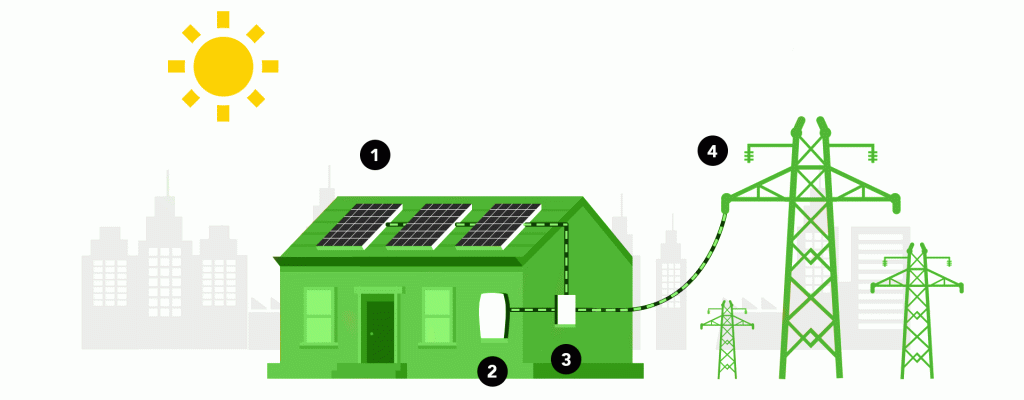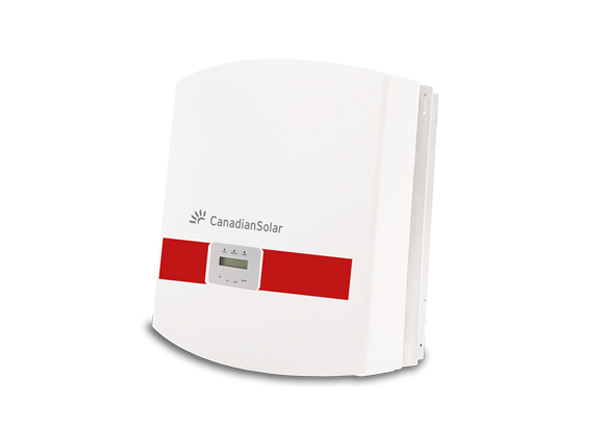How does Solar Energy work?
Solar power is a renewable or ‘green’ energy produced completely by the sun. Have you ever wondered how solar panels work to transform sunlight into electricity? We’ll take you through the process of how solar energy works.

Step 1 How do Solar panels work?
Solar PV panels work by capturing the sunlight, creating electrons in the panel’s silicon cells to release energy that becomes direct current (DC) electricity.
Step 2 Solar inverter
A solar inverter then transforms DC into AC (Alternate Current) – which then powers your home in real-time.
Step 3 Solar battery
If you install a solar battery, excess energy is stored here for later use (rather than pushing out to the grid).
Step 4 Power grid
If you don’t have a battery, any excess energy that you create is sold to the grid. This energy is measured and calculated to credit your account. You can also draw energy back when you need it.
Solar Panels
Solar panels are made up of multiple of photovoltaic cells to create one large panel. The photovoltaic cells convert the sun’s rays into direct current energy (DC) ready to be converted to a home-ready alternating current (AC) to power your home.
Each photovoltaic cell is created using two layers of silicon. The bottom layer is implanted with boron, which then generates a positive charge, while the top layer is infused with phosphorous which produces a negative charge. These cells are framed with metal conductive plates, that coverts the sunlight into energy which then proceeds through wires into your home.

Solar Power Battery Storage
When the sun shines on your solar panels, the panels, through the use of photovoltaic cells, convert the sunlight into DC electricity. A solar inverter then converts this into AC electricity which can then be used to power your home. When an excess of power is being generated that is not required to power the home, it is used to charge the batteries. The power is converted to DC electricity, then stored in the battery for use at a later time. Once the sun has gone down there is no more immediate power available, the two-way inverter then converts the power back into usable AC electricity.
Once the batteries are fully charged, any further excess power produced is sold back to the grid. If you’re selling more power back to the grid than you are drawing from it, this could result in a nice tidy credit from your retailer.
What Is a Solar Power Inverter?
Solar inverters transform the power captured by solar panels into an Alternating current (AC) suitable for your existing home electrical system. An inverter also allows your system to feed any excess energy you create back into the power grid.

Selling Power Back To The Grid
Any excess electricity that you do not use can be sold back to the grid. The energy buy-back rates differ between power retailers so it pays to do your research to ensure that the power retailer you choose has the best deal for your energy consumption needs.
When getting set up with solar energy, you’ll need to consider what kind of solar power system is the best for you. There are grid-tied systems, off-grid systems, and hybrid systems. If you want to be completely self-sufficient, then you’ll want an off the grid system. If your home is already connected to the grid then a grid-tied system is the best way to go.
Buyback rates are on average 8c per kilowatt-hours which is a lot less than what we pay for power (30c per kilowatt hours). While selling unused energy back to the grid won’t hurt, it makes sense to try and utilise all your power creation if you’re planning to go solar.
Ready to go Solar? Aeon Energy installs Solar panels in Hamilton, Cambridge and the surrounding Waikato.

